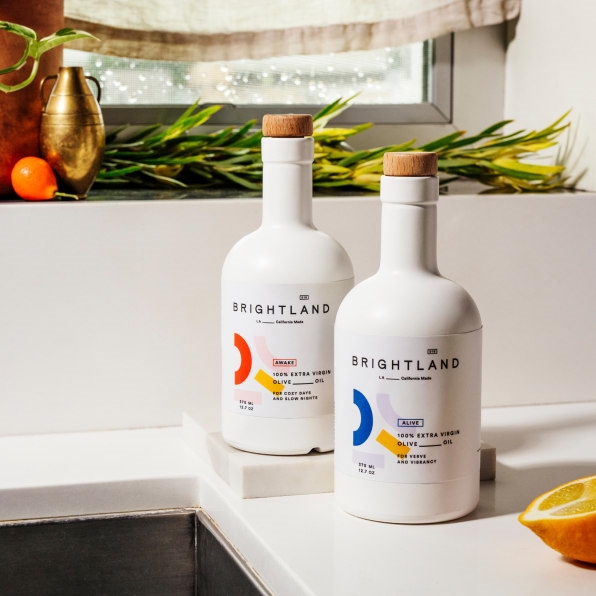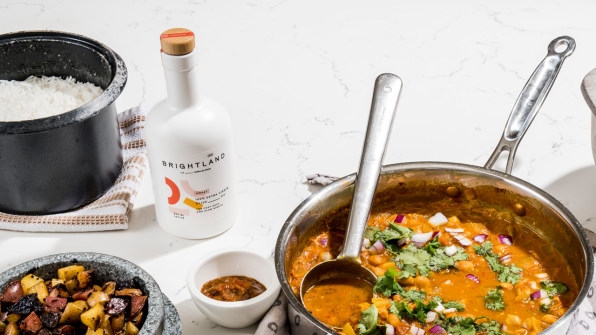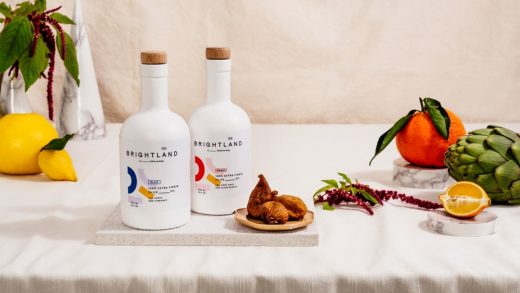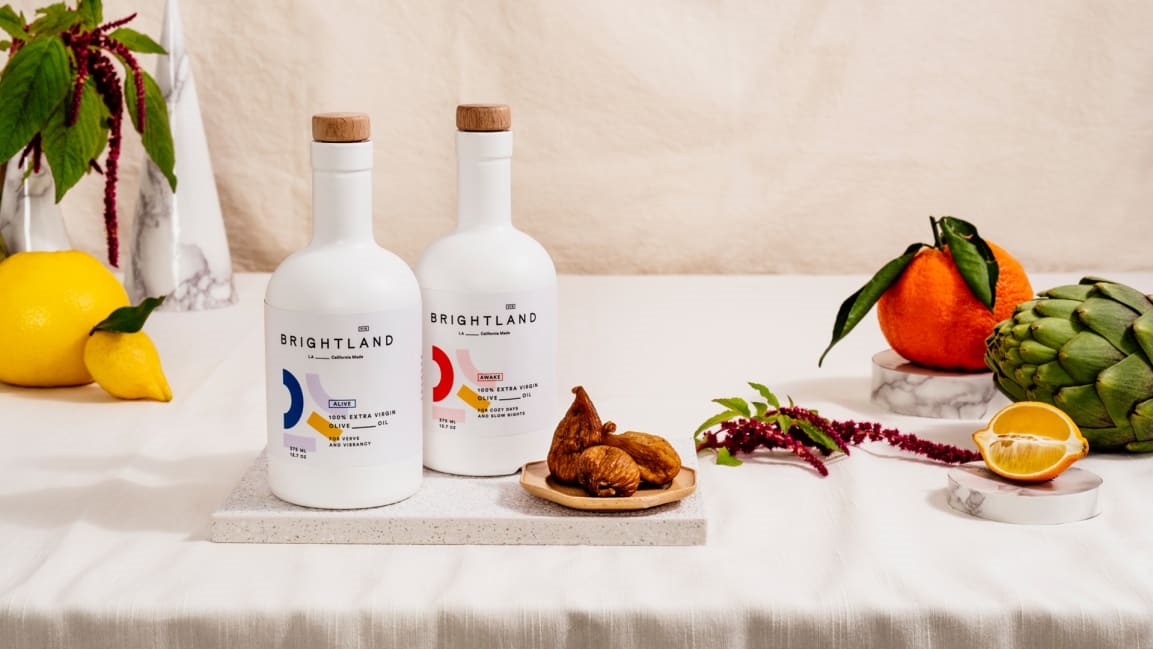Olive oil gets a modernist makeover
Millennials grew up drizzling extra virgin olive oil on everything: Their salads, their pasta, their pan-fried salmon.
It all began in mid-’90s when today’s twenty- and thirtysomethings were in middle school. Their parents began spotting high-end bottles of olive oil in specialty food stores, which quickly led to more reasonably priced versions in their neighborhood grocer. All of this excitement around what’s been called the Mediterranean’s liquid gold led to a 73% spike in olive oil sales between 1992 and 1997.
But these days, much of that excitement has fizzled out. Olive oil is now a fixture in most kitchens. And the bottles themselves often look fairly generic, with old-fashioned labels covered in logos and technical details about the oil inside. The most common ones in the grocery store, like Bertolli and Pompeian, have labels that look identical to one another. And every grocer, from Walmart to Stop&Shop, has its own brand designed to blend into the rest of the products on the shelves. Some research suggests that many of these brands sell products that are rancid, adulterated with cheaper oils, or contain impurities.

Brightland appears like a ray of sunshine compared to traditional olive oil brands. The new company was founded by Aishwarya Iyer, who has spent her career working at startups. She partnered with a family-owned California farm that harvests the olives early and mills the oil on-site to create top-grade, highly fragrant extra virgin olive oil at $37 a bottle.
“Most of us don’t feel attached to any particular brand of olive oil,” she says. “I thought that was so odd because olive oil is such a big part of our lives. We use it every day, on so much of what we eat.”
Iyer wanted the bottles to look attractive enough that people would want to display them in their kitchens, rather than hiding them away in the pantry. The powder-coated bottles are designed by the Charleston-based graphic design firm Stitch Design, and the labels feature little pops of color in the form of floating shapes: One flavor, Awake, contains pinks and oranges; another, Alive, features blues and golds.
Right now, the bottles are available through Brightland’s website, but Iyer is beginning to partner with artsy speciality stores, like Brooklyn-based gift shop Regular Visitors. The investment in design appears to be paying off, based on customers sharing artful photos of their bottles on Instagram and sending bottles to friends as gifts. “It makes me so happy that people think of giving these as gifts,” says Iyer. “I’d never thought of giving olive oil as a present before, but I’ve noticed that people are gifting them as hostess gifts or housewarming presents because they think the bottles are so beautiful.”
But while Iyer paid a lot of attention to the design of the bottles, she was driven to launch Brightland because she’d learned about how poorly made some olive oil really is. Several years ago, Iyer felt queasy after a dinner that had been drizzled with plenty of olive oil. She ended up going down a rabbit hole, learning about how most olive oil brands aren’t being honest about what’s inside their bottles.
Back in 2010, UC Davis published two widely reported studies showing that olive oil brands are effectively selling fake products. The university found that 69% of extra virgin olive oils in the United States failed taste tests and of these, 86% also failed chemical tests, revealing that the oil was oxidized, adulterated with cheaper refined olive oils, made from damaged and overripe olives, or improperly stored or processed. Some of the most popular brands on the market–Bertolli, Newman’s Own, Whole Foods, Safeway, Pompeian, Star, Colavita–all failed tests. Brands that passed include California Olive Ranch, Cobram Estate, and Lucini. (It’s worth noting that UC Davis’s Olive Center’s stated mission is to “address the research and education needs of California olive growers and processors,” which some have claimed makes it more biased to California-grown olives.)

When you learn about what is inside impure olive oil, you may never want to use the stuff ever again. For instance, some olive oil tastes grubby because it is likely contaminated with larvae. Olive flies sometimes lay eggs in young olives, which are then processed into the oil later. Olives oil can also become moldy when olives have been crushed with mud. And rancid olive oil is the result of oil being exposed to light, heat, or air during the storage process.
From taking classes on olive oil to finding a farm that could produce pure products, process was a focus–yet Iyer doesn’t want Brightland’s branding to overwhelm customers with too many details unless they happen to be curious. There’s a section on the website where customers can click to learn more or dig into the studies, but she’s not emphasizing this in her marketing–the younger customers she’s aiming at tend to be educated consumers, she explains: “We’re used to researching products before we buy them.”
Instead, Iyer wants to lead with taste and beauty. Brightland sells two varieties of olive oil with two simple descriptors, Alive and Awake, that come with tasting notes akin to what you might find with wine. Alive is smooth and nutty, with hints of green tomato and green almond. Iyer recommends using it in dressings and marinades, baked goods, hummus, and, even even drizzled on sorbet and chocolate. (It’s made from Arbosana and Arbequina olives.) Meanwhile Awake has a more complex flavor, with grassy notes that remind you of artichokes and herbs. The strong flavor works particularly well with heartier foods, like soups and stews, baked potatoes, roast chicken, fried eggs, and even just warm bread. (This one only contains Arbequina olives.) The company’s website even has a “Field Notes” section where Iyer offers recipes that feature her oils, including olive oil cakes and cocktails.
“There’s a lot of art and science that goes into really well-made artisanal olive oil,” says Iyer. “But it can be really intimidating when you first learn about it: I certainly found it confusing. I thought giving each flavor a name and tasting notes was a fun way to provide the customer with a roadmap.”
Update: This story has been updated to provide more clarifying details about the 2010 UC Davis olive oil report cited above.
(38)



